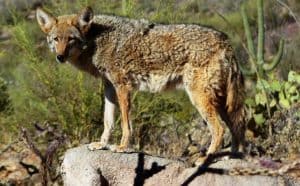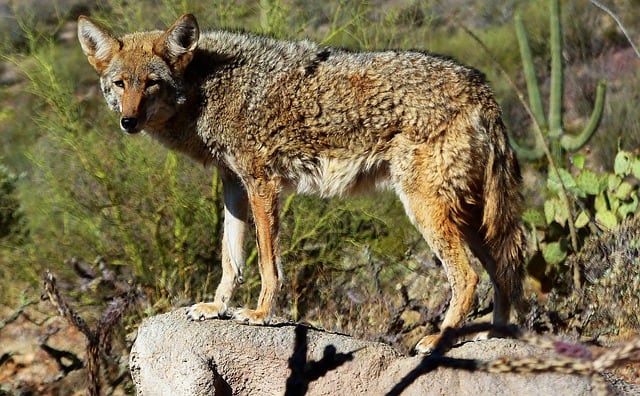 There’s no shortage of stuff to stress about these days, and so many unknowns. When will life as we know it return to normal? How much longer until we feel free to socialize within six feet? And when will our glasses stop fogging up from each masked exhale? But as with most hardships COVID-19 has its own silver lining, aside from all the amusing memes.
There’s no shortage of stuff to stress about these days, and so many unknowns. When will life as we know it return to normal? How much longer until we feel free to socialize within six feet? And when will our glasses stop fogging up from each masked exhale? But as with most hardships COVID-19 has its own silver lining, aside from all the amusing memes.
On a personal note, who could have foretold four months ago that I’d have to learn to link, pin, invite, spotlight, admit, mute, meet, host, and chat on Zoom? I’m still hopelessly challenged at technology. But if I have a prayer of making it to retirement in 2021 I know that survival requires adapting to even the most hostile of environments.
Since the library closed in mid-March I’ve been hunkering down at my home on the Cape with regular forays back to Norwood. While only 88 miles away, there’s a hint of “Wild Kingdom” here in Chatham. Due in part to the overgrown kettle pond across the street, the neighborhood is teeming with wildlife, from spring peepers, bullfrogs, possums, and otters, to bunnies, mice, raccoons, and wild turkeys. And Canis latrans, aka the eastern coyote, which has survived hostile hunters for centuries and is perhaps the most adaptable creature of all. I find this member of the canine species both fascinating and fearsome.
Coyotes now run rampant on the Cape, and everyone I know has a coyote tale to tell, except me. In the April 2016 issue of Cape Cod Life, Melissa Manderson shares several stories of coyote sightings by locals in her article, “Cape Cod is Coyote Country.” My humble wish this summer is to see just one of these so called prairie wolves myself, and I’ll move on.
The DNA of the eastern coyote, often referred to as a coywolf, is comprised of western coyote, eastern wolf, gray wolf, and even dog genes. Originally inhabiting the grasslands of the Midwest, coyotes are now found everywhere from Canada to Costa Rica. And like many of us, they’ve discovered the charms of Cape Cod.
With few natural predators other than the odd mountain lion or alligator, the coyote has displayed an impressive ability to prosper in almost any habitat, from deserts, mountains, and plains to suburbs and big cities. It’s not unusual to see them strolling down Main Street in Chatham in search of their next meal, or so I hear. Also like us, they dine on what’s in season. Feasting primarily on rodents and rabbits, they also enjoy fish, frogs, and large game, as well as berries, small pets, and the occasional leather glove.
In Native American folklore the coyote has been portrayed as a cunning outlaw and trickster. We grew up watching Wile E. Coyote’s endless schemes to take down the Roadrunner, only to be outwitted time and again. In reality, however, the wily coyote almost always prevails. Unlike the wolf, hunted to near extinction, the coyote has not only survived but thrived thanks to a killer combination of keen vision, hearing, speed, sense of smell, and sheer grit. How can you not admire such an amazing animal?
While normally not a threat to humans, coyote attacks on pets are becoming increasingly more common. In May, a coyote killed an off-leash puppy on a beach in Provincetown where a woman had recently sustained a coyote bite on her ankle. Probably the same culprit who’s giving his buddies a bad name, but still.
A few years ago my neighbor’s cat had an encounter with a coyote that didn’t end well. We heard the commotion and the next day found great clumps of feline fur strewn about the lawn. Jen, another neighbor, tells me she and her black lab see a coyote almost every other evening. She keeps Oliver on a tight leash as their uninvited companion with the pointy ears and bushy tail trails them all the way home.
As the owner of a small dog myself, why would I want to get anywhere near this much maligned predator? I’ve been warned of the dangers of letting Nicky off leash numerous times, even in my own fenced-in yard. But since everyone and their brother has experienced a coyote sighting in Chatham but me, it’s become a kind of challenge. Jen recently sent me a video her nephew took of six coyotes just hanging out on their street. Their haunting, spine-tingling howling at night sends Nick into a frenzy, but the cunning creatures continue to elude me.
My terrier is no stranger to coyotes, in Norwood anyway. This past Christmas Eve I got worried when he and my husband had been gone an unusually long time. Stepping outside to look for the car, I discovered our dog panting at the front door. Images of the faithful Lassie racing home to alert the family that Timmy had fallen in the well sprang to mind. I was grabbing my coat to go search for Brad, possibly in distress, when his text came in: “Have you seen Nick?”
During their walk Nicky had apparently sprinted for the woods, only to re-emerge running for his life, a coyote fast on his heels. Shouting and shining the flashlight in the beast’s eyes, Brad interrupted the chase as the coyote stopped and stared back at him before loping off. His intended prey, meanwhile, was nowhere in sight. Brad repeatedly called and whistled for the dog but when he heard howling in the distance he concluded the worst. Nicky probably never stopped running till he reached the safety of his doorstep. We don’t let him off the leash anymore.
If you’re curious about coyotes and want to learn more about Canis latrans from the comfort of your couch, contact the Norwood Library and we’ll gladly gather some books for curbside pickup. You’ll find a wealth of information, as well as colorful photos and captions, in Exploring the World of Coyotes, a children’s book by Tracy C. Read. In Search of the New England Coyote, by P. Anderson, contains folksy, first-hand accounts of coyotes and other creatures and is a quick read. For a more in-depth look at the “American jackal,” ask for Dan Flores’s well-researched Coyote America: a Natural and Supernatural History.
Leaving no stone unturned in my quest for related resources, I even watched the rom-com Coyote Ugly, which has absolutely nothing to do with the aforementioned mammal. And like the coyote itself, I recommend giving it a wide berth.
April Cushing is the Head of the Adult and Information Services Department at the Morrill Memorial Library in Norwood, MA. Look for her article in the July 2, 2020 issue of the Transcript & Bulletin.



